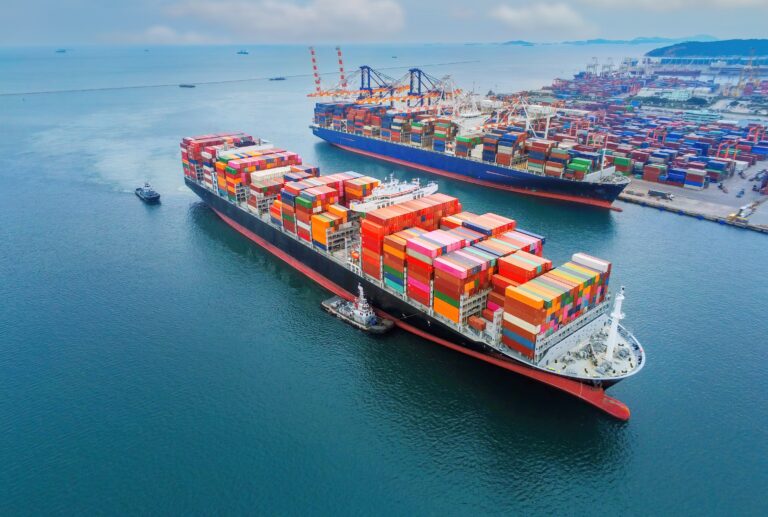Ericsson’s Alvise Carlon argues that regulation can be fixed anytime the EU chooses and all is not lost on the tech front, even if it’s not what we thought would happen
Neither European politics nor its telecoms market are greatly encouraging at the moment. The latter is likely to be easier to fix than the former. In telecoms at least, solutions don’t seem any closer, although Mario Draghi’s new report has certainly provided food for thought this week. Alvise Carlon (pictured), Head of Cloud Software and Services for Europe and Latin America at Ericsson, suggests some ways forward in an extended interview.
He started by saying, “We need to start acknowledging that Europe is lagging behind and we urgently need all the Europe policymakers to stay focused and prioritise innovation over regulation.
“At stake [is] the overall competitiveness and prosperity of Europe…we need to understand that high-performing telco infrastructure is a key enabler for the digitalisation of all other industries and the society. We cannot gain our technology leadership [or] achieve decarbonisation ambitions without a solid telco infrastructure.”
Areas where Europe lags
Where is Europe lagging on the telecoms front? Carlon says one example is that the overall European investment in digital infrastructure is less half what the US invests – the EU’s population in 2024 is about 449.2 million and the US’ about 345.4 million.
Another factor is that only about [correction from original which stated 19%] 27% of 4G sites have been upgraded with mid-band spectrum to boost throughput and capacity for consumers and enterprises in Europe. China and North America are above 30%, and South Korea up to about 80%.
A third indicator is the slow adoption by users of 5G Standalone (SA) which is mainly concentrated in India, China, the US and South Korea. There are “very tiny spots here and there in Europe,” Carlon says.
“It’s crystal clear that we have a gap versus the other continents and this gap, unfortunately, is becoming bigger and bigger.”
It will be interesting to see how BT’s 5G SA offer launched this month fares in 15 British cities. Particularly its tactic of promoting SA with fibre broadband/WiFi 7 as ubiquitous, fast connectivity works – even though speed is not necessarily the most important thing, as so many studies have shown. Coverage and reliability trump speed every time.
Then there is the issue of scale: “Our operators in Europe have an average of 4 million subscribers per country market, compared to 95 million in the US, 300 million in India or 400 million in China…scale is really very, very important…to be able to invest in innovation.”
Deutsche Telekom is the only European operator group to have crossed the threshold of €100 billion market capitalisation – and that has been propelled by its majority stake in T-Mobile US.
These factors have contributed to operators finding that all too often, the return on capital employed (ROCE) is lower than the cost of capital employed. The plea to the European Commission to allow in-country consolidation has been going on for year.
No in-country consolidation
It seems to fall on deaf ears. For instance, the Commission gave permission to Orange Spain to merge with MasMovil, on the proviso that the way was paved for another national competitor to maintain choice and keep prices down. This was Romania’s Digi, which already had a strong MVNO presence in Spain. (Interestingly, after allowing the merger of Sprint and T-Mobile, the US regulator insisted on the creation of a fourth national operator – in that case, DISH Network.)
National regulators and outright greed by governments have played their part too. Each European Union country is at liberty to allocate frequencies as it sees fit. When handing out 5G licences, the Italian regulator took the opportunity to rake in more than €6 billion from the operators in spectrum licensing fees for the state and so did BNetzA, the German regulator.
Money that could have been spent on infrastructure, particularly given how laggardly Germany and Italy were at that point in the deployment of fibre broadband. Perhaps it’s not surprising that most of the German opcos lagged in their 5G build out commitments.
Alongside the auction, BNetzA also insisted on the creation of a new, national 5G-only competitor in the shape of 1&1. It also made spectrum available to enterprises, such as universities and industries, wanting to build their own, private 5G networks – potentially undermining one of the chief means of operators monetising 5G.
Meanwhile, in some Asian countries, Carlon says, “These frequencies are given free of charge in some countries, provided that there is a commitment from the operators to provide certain coverage, even where there is not a solid business case, such as providing fixed wireless access in rural areas and so on.”
How can we fix it?
So in-country consolidation in Europe has seemed no nearer than it was, say, in 2016 when the Commission declined to approve O2 UK merging with 3 UK*, but a new Commission will come into power at the beginning of November, and there is widespread acknowledgement within the top echelons of the European Union that change is needed.
And that’s another point. These deliberations are so, so slow – Draghi is arguing for policing problems as they arise rather than blocking a combined entity accuruing greater market power. The glacial speed of deliberations regarding mergers – the UK the proposed merger of 3UK and Vodafone is still grinding on although the UK is now outside the EU – does adds to the uncertainty which has been a substantial factor in the delayed roll out of 5G SA networks. It is also suffering a hangover from the pandemic when telcos ‘overhired’ and are still saddled with inventory.
But also, it turns out that moving to 5G SA has been more difficult than was originally thought – cloud native is far from native to telcos. Added to which telcos’ idea of reliable and resilient networks is an order of magnitude beyond just about everyone else’s.
Then there’s the business case, which is a chicken and egg situation. You can’t offer 5G SA-based services – like super low latency and network slicing without deploying the tech and all too often proofs of concept don’t scale up. Also many are just not convinced by the business case.
For example, Dean Bubley is well-known voice in the industry who says he is a “Slicing Skeptic” on both commercial and technical grounds. In this detailed blog he describes “proper” network slicing (as defined by the 3GPP rather than a VLAN or any other variety) as “one of the worst strategic errors made by the mobile industry since the catastrophic choice of IMS for communications applications.”
He goes on to say that this led to “the fiascos” of voice over LTE (VoLTE – you’ll find an exploration of some of the issues from one of Mobile Europe’s panel sessions here) and RCS and, here’s the real kicker, “the loss of telcos in communications more broadly”.
Others suggest slicing might be a good wholesale, rather than retail option.
If you were to sum it up, arguably so many of the use cases we were all carried away with for 5G were a technology in search of justification. We sort of forgot that the point of 5G was to handle larger quantities of traffic more efficiently and cheaply in the blather about remote surgery and connected vehicles.
Certainly the old operator mantra of ‘If we build it they will come’ is stone dead. BT Group’ Chief Security and Networks Officer, Howard Watson, famously replied, “We are not doing that again,” when asked about a future network upgrade to 6G at MWC in 2023. In a recent interview, Radeep Sekhon, CTO of Indian operator Airtel stated, “I think 5G is the last ubiquitous G” and that “6G is better seen as [an] industrial G”.
Open RAN yet to break into a run
There is a similar story to that of the core at the other end of the network, the RAN, in terms of things not going to plan and delays. Again open RAN has proved trickier than expected. Recent research by Dell’Oro predicted that after a slow start, Europe is projected to account for 15 to 20% of worldwide open RAN revenues by 2028 and open RAN revenues globally will make up just 15-20% of the global RAN market by 2028.
Something else has become clear too. One of the foundational motivations for open RAN was to open up the market to more entrants and break the dominance of the ‘Big Three’ RAN equipment suppliers – Ericsson, Huawei and Nokia. The thinking was that more players in the disaggregated RAN ecosystem would foster greater innovation and drive down prices.
Tech progress
Stefan Pongratz, Vice President of RAN market research at the Dell’Oro Group, recently noted, “Open RAN is happening, but this vision that Open RAN will significantly change the vendor dynamics is fading,” upon publication of the new report.
Carlon points out that Ericsson has developed a cloud-native, dual-mode core platform that supports 4G and 5G, Standalone and Non-Standalone and in Europe and Latin America, we already have 28 mobile operators live on this platform. Its performance has proved to be “very solid” he says supporting more than 100 million subscribers in Latin America and Europe.
He says, “This cloud native software provides a lot of benefit for the operators. Higher resilience since you distribute the workload over multiple microservices. Higher scale scalability. You simplify the operation, because now we can upgrade the software in service – without removing traffic from the nodes. Most of all, the cloud-native architecture allows shorter the time to market…thanks to the cloud native architecture compared with traditional architecture.
Most importantly, he claims Ericsson also radically simplifies cloud infrastructure by deploying Kubernetes over the bare metal instead of virtual machines. Carlon says, “We created one cloud-native platform on bare metal on which we are deploying all the Ericsson cloud-native software, starting from the cloud RAN to the edge node to the main data centre in a much more efficient way.
We can provide to the operator with a TCO saving of at least 25% because the platform has fewer components, consumes less power and takes up less space in the data centre. Its overall lifecycle management is cheaper and simpler because it’s the same platform from the edge to the core, reusing the same R&D across all the network architecture.”
* Mind you, it did allow Three Italy and Wind to merge in Italy in 2016, with remedies, but that didn’t pan out well. According to this analysis from Lightreading, execution rather than consolidation per se was largely the problem.













